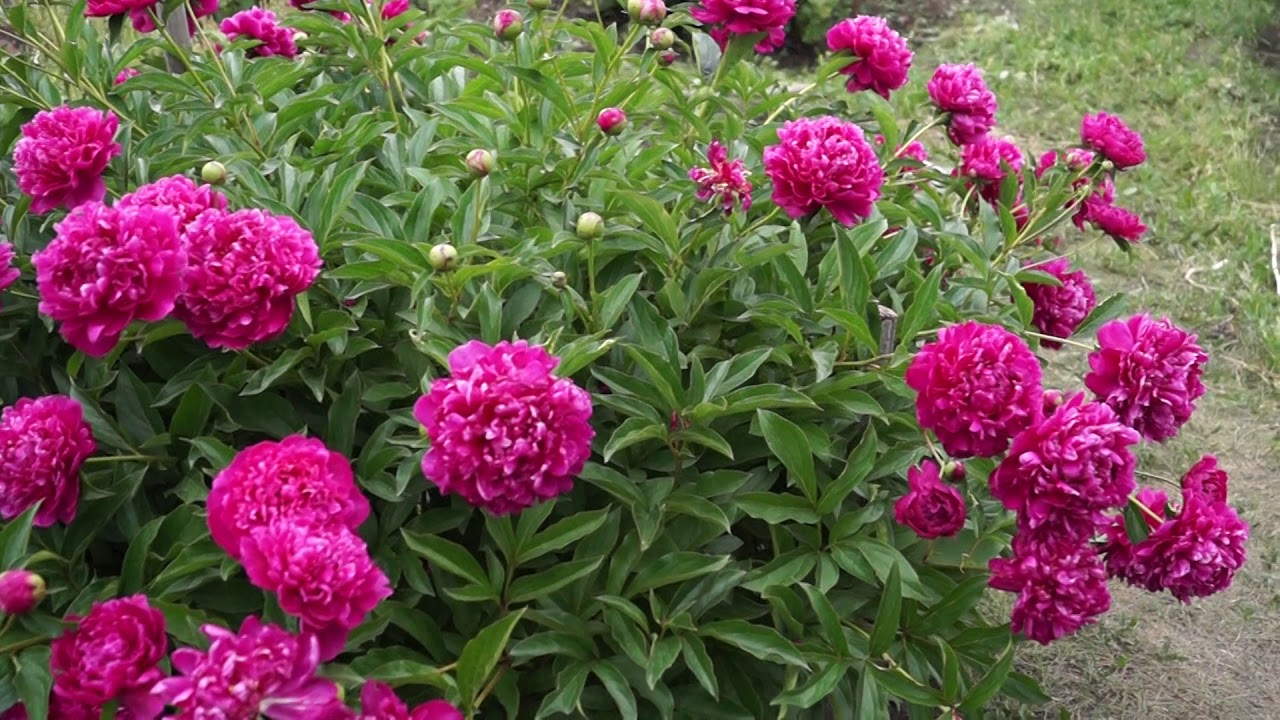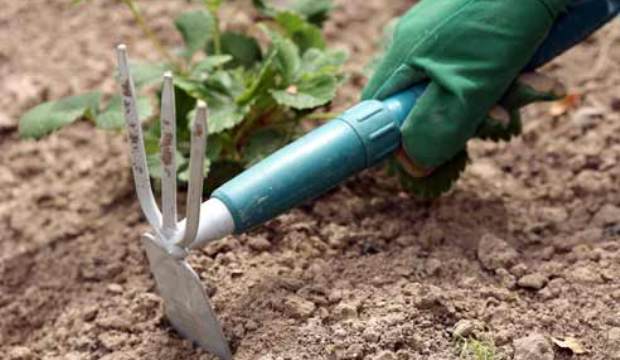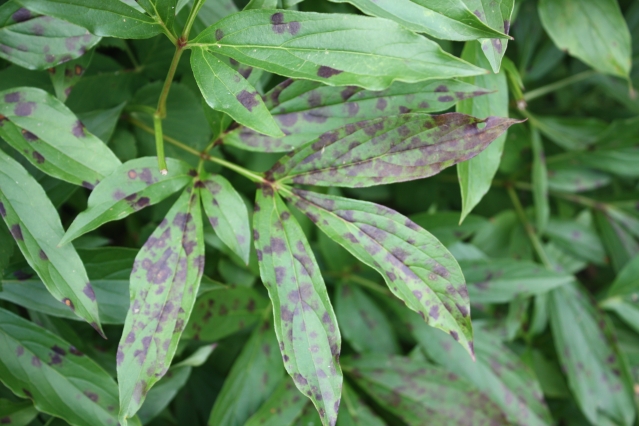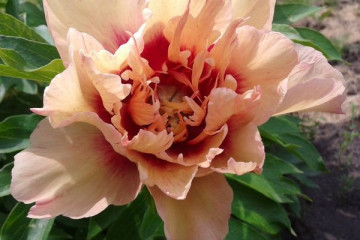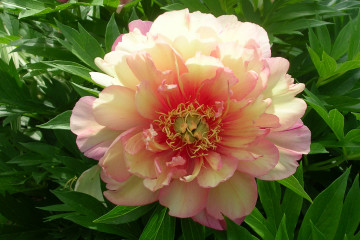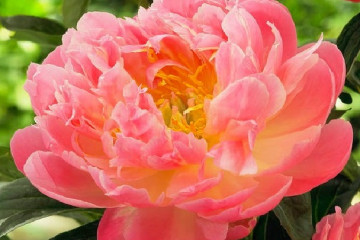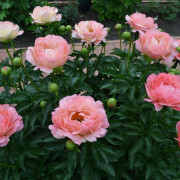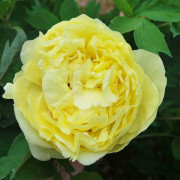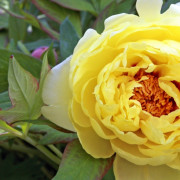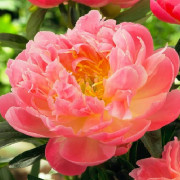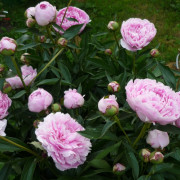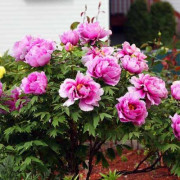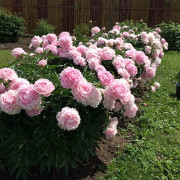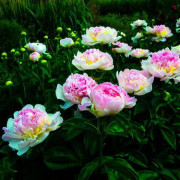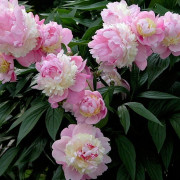Peony Kansas (Paeonia Kansas) - growing in the garden
Content:
The Kansas peony is one of the most popular types of culture. The plant is characterized by velvety flowers that have a rich crimson color. That is why it is often used in garden compositions.
Peony Kansas (Paeonia Kansas) - what is this variety, history of creation
The plant has excellent decorative characteristics and is often used in landscape design.
Brief description, characteristic
According to the description, the Kansas peony belongs to the category of herbaceous plants. It is considered quite unpretentious and has excellent decorative properties. The culture reaches a height of 1 m. It has large single flowers of a rich crimson color.
The buds appear in late May and are present until mid-June. Each flower can be up to 25 cm in diameter. It is characterized by double petals, which make the flower fluffy.
Peony herb Kansas - perennial. It can be grown in one place for over 10 years. The culture is distinguished by its unpretentiousness to the composition of the soil. In fertile soil, it can grow for 3 years without additional nutrition. For this, fertilizers should be placed in the hole.
The crop is resistant to drought and low temperatures. It can withstand frosts down to -35 ℃. It is recommended to cover young plants before the arrival of winter. Kansas reproduces in standard ways.
Advantages and disadvantages of the variety
The main benefits of culture include the following:
- excellent decorative properties;
- frost resistance;
- disease resistance;
- the ability to use for decorating bouquets.
Use in landscape design
Paeonia Kansas is actively used for garden decoration. It can be combined with other plants or used for single plantings. The culture retains its decorative properties for a long time after cutting. Therefore, it can be used to decorate bouquets.
Growing a flower, how to plant it in open ground
In order for the Kansas milk-flowering peony to have excellent decorative properties, it is important to correctly plant the planting work.
Planting by root cuttings
Most often, the plant is planted with root cuttings. To get planting material, you need to use bushes 3-4 years old. Root length at least 15 cm. The plant must have at least 3 buds.
What time is the boarding
The Kansas peony is recommended for planting in the fall. This can be done in late August or early October. Sometimes it is permissible to plant plants in early spring.
Location selection
The plant of this variety is recommended to be planted in sunny, well-lit places. Kansas can hardly bear the shadow. Therefore, it is not recommended to plant it near buildings or other plants.
How to prepare the soil and flower for planting
Before planting, it is worth preparing a recess of at least 60 cm in size. A drainage layer should be placed on the bottom, and then put the substrate. For its preparation, humus, fertile soil, potassium sulfate, superphosphate are mixed.
Planting procedure step by step
A sunny area with good air circulation is required for planting. To plant a peony, you need to follow these steps:
- Make a depression and fill with fertile soil.
- Add peat and sand to heavy and clayey soil. Clay is added to the sandy soil.
- One third of the hole should be filled with the prepared composition. The rest is filled with black soil.
- Then you can plant the plant.
- Water the garden and tamp.
Seed planting
The plant can be propagated by seeds. This method is usually used by breeders. Peonies sprout well. Their flowering begins only after 4 years. Gardeners recommend using cuttings. The seed method is used for breeding purposes.
Plant care
In order for the plant to grow and develop normally, it should be provided with full and high-quality care.
Watering and feeding
Flowers need a moderate amount of moisture. Usually 1 bush requires 3 buckets of water. The procedure is carried out at intervals of 10 days. In the spring, at the moment the juices begin to move, peonies must be watered regularly.
During the growing season, peonies are fed 2 times. For the first time, organic fertilizers are applied, the second time - minerals. It takes a lot of effort to develop young shoots. Therefore, plants are fed with ammonium nitrate. Take 15 g of the product in a bucket of water.
Mulching and loosening
In order to preserve nutrients in the soil, it is recommended to cover the root zone with a layer of mulch. After the end of flowering, the soil is loosened and weeded. Sometimes nutrients are added at this point. It is best to loosen the soil after rain. This improves the penetration of useful elements into its structure.
Preventive treatment
To avoid the development of diseases and the influence of parasites, the plant must be sprayed with fungicides and insecticides. In the absence of preventive treatments, the plant can be seriously damaged.
Peony Blossom Kansas
In order for a culture to grow normally and flourish, it needs full and high-quality care.
A period of activity and rest
Buds appear on the tops of the shoots. This happens in May-June. Flowering usually ends in mid-July.
Care during and after flowering
During the flowering period, the culture does not need specific care. It needs to be watered systematically. In this case, fertilization is not required.
What to do if it does not bloom, possible reasons
Sometimes peonies don't bloom. This is due to the wrong choice of the planting site, violation of the irrigation and fertilization regime. To achieve abundant flowering, you need to identify and eliminate the cause.
Peonies after flowering
After the end of flowering, it is necessary to provide the plant with quality care. This will be the key to the normal development of culture next year.
Transfer
Peony can not be transplanted. Usually, the procedure is carried out when problems arise. To do this, the bush must be carefully pulled out of the ground, the roots must be cleaned from the ground and dried. After that, you can plant the plant in a permanent place.
Pruning
Pruning is prohibited immediately after flowering. The petals should dry out. Only then can the bud and stem fragment be cut off.
Preparing for winter
Ammonium nitrate must be added under the bush. It is also permissible to use organics. After that, the culture is covered with mulch and insulation.
Diseases, pests and ways to control them
The plant is resistant to disease. However, if agrotechnical recommendations are violated, it may suffer from gray rot or powdery mildew. Fungicides help to cope with diseases.
The Kansas peony is a popular ornamental crop that is often used to decorate the garden area. To succeed in growing a plant, you need to properly care for it.
